Raised Beds for Vegetables~ Best Size??
clare2008
15 years ago
Featured Answer
Sort by:Oldest
Comments (32)
ruthieg__tx
15 years agolast modified: 9 years agoclare2008
15 years agolast modified: 9 years agoRelated Professionals
Ferndale Landscape Architects & Landscape Designers · Hyattsville Landscape Architects & Landscape Designers · Towson Landscape Architects & Landscape Designers · Brookside Landscape Contractors · Athens Landscape Contractors · Battle Ground Landscape Contractors · Fuquay-Varina Landscape Contractors · Garland Landscape Contractors · Golden Landscape Contractors · Roseville Landscape Contractors · South Lyon Landscape Contractors · San Pablo Landscape Contractors · Bear Driveway Installation & Maintenance · Conroe Driveway Installation & Maintenance · Round Lake Beach Driveway Installation & Maintenancecrystalgeorgia
15 years agolast modified: 9 years agojonnys
15 years agolast modified: 9 years agofarmersteve
15 years agolast modified: 9 years agogardenlen
15 years agolast modified: 9 years agowayne_5 zone 6a Central Indiana
15 years agolast modified: 9 years agoclare2008
15 years agolast modified: 9 years agoveggiecanner
15 years agolast modified: 9 years agoribbit32004
15 years agolast modified: 9 years agoworldofyardcraft
15 years agolast modified: 9 years agobelindach
15 years agolast modified: 9 years agoninjabut
15 years agolast modified: 9 years agocrispino
15 years agolast modified: 9 years agobelindach
15 years agolast modified: 9 years agokayhh
15 years agolast modified: 9 years agoninjabut
15 years agolast modified: 9 years agolantanascape
15 years agolast modified: 9 years agogreenbean08_gw
15 years agolast modified: 9 years agoclare2008
15 years agolast modified: 9 years agohandh3842
15 years agolast modified: 9 years agogranite
15 years agolast modified: 9 years agohandh3842
15 years agolast modified: 9 years agocrispino
15 years agolast modified: 9 years agolantanascape
15 years agolast modified: 9 years agoglib
15 years agolast modified: 9 years agocrispino
15 years agolast modified: 9 years agoirene_dsc
15 years agolast modified: 9 years agobelindach
15 years agolast modified: 9 years agozebraman
15 years agolast modified: 9 years agocrispino
15 years agolast modified: 9 years ago
Related Stories

GARDENING GUIDES8 Materials for Raised Garden Beds
Get the dirt on classic and new options for raised vegetable and plant beds, to get the most from your year-round garden
Full Story
GARDENING AND LANDSCAPINGBuild a Raised Bed to Elevate Your Garden
A bounty of homegrown vegetables is easier than you think with a DIY raised garden bed to house just the right mix of soils
Full Story
SPRING GARDENINGInspiring Raised Beds for Fall and Spring Planting
Make Your Next Vegetable Garden Even Better with Beautiful Boxes and Paths
Full Story
FARM YOUR YARDAdvice on Canyon Farming From L.A.'s Vegetable Whisperer
See how a screened garden house and raised beds help an edible garden in a Los Angeles canyon thrive
Full Story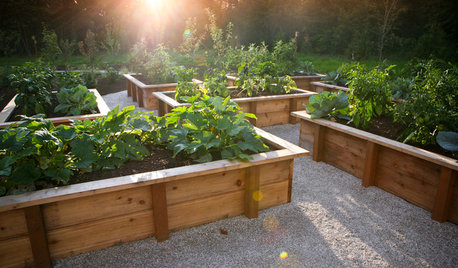
GARDENING AND LANDSCAPINGRaised Beds Lift Any Garden
From good old-fashioned wood garden boxes to modern metal troughs, raised beds can make any landscape space look great
Full Story
FARM YOUR YARDHow to Build a Raised Bed for Your Veggies and Plants
Whether you’re farming your parking strip or beautifying your backyard, a planting box you make yourself can come in mighty handy
Full Story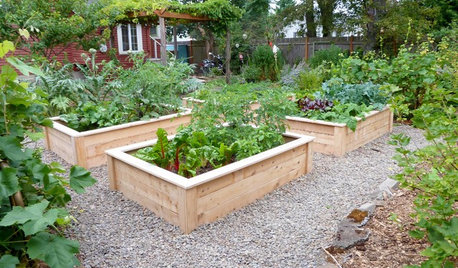
GARDENING GUIDES12 Tips to Help You Start an Edible Garden
Get on your way to growing your own vegetables with a raised bed or a few containers on the patio
Full Story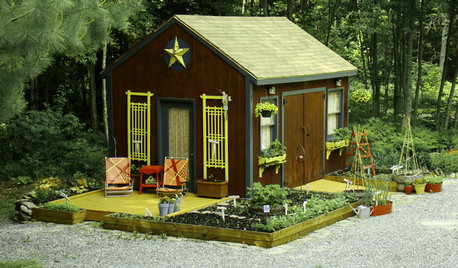
GARDENING AND LANDSCAPINGDig This Garden Shed Makeover for Less Than $300
New paint, accessories and raised vegetable beds turn a drab outpost into a colorful charmer
Full Story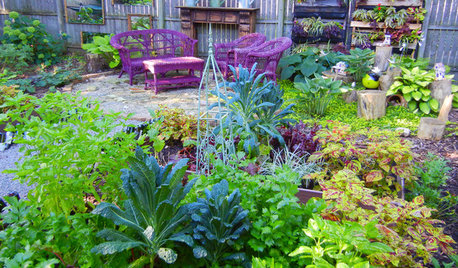
GARDENING GUIDESShades of Vegetable Gardens: Growing Edibles in Less Sun
See how one gardener produces a veritable feast of vegetables and herbs under a canopy of shade
Full Story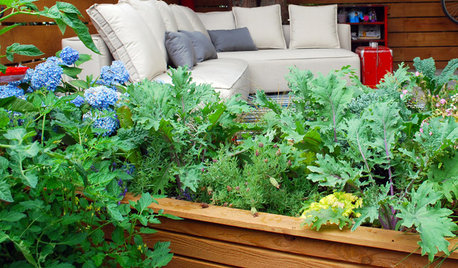
GARDENING GUIDESStep Right Outside for Fresh Herbs and Vegetables
Decks and patios can be convenient spots for edibles, and sometimes they even offer advantages over backyard gardens
Full StoryMore Discussions







justaguy2